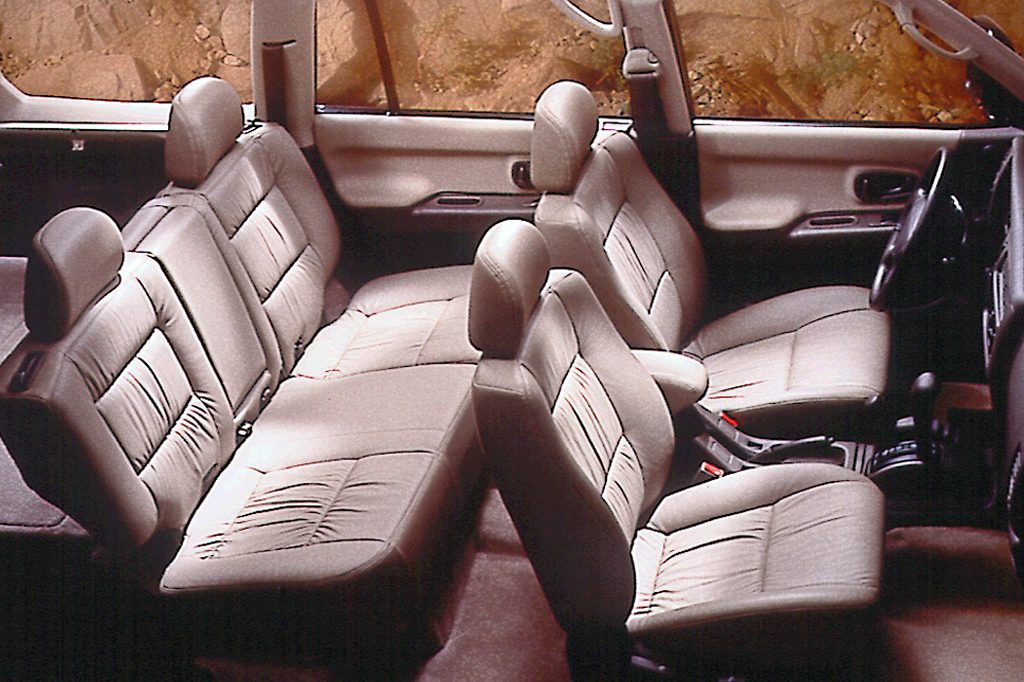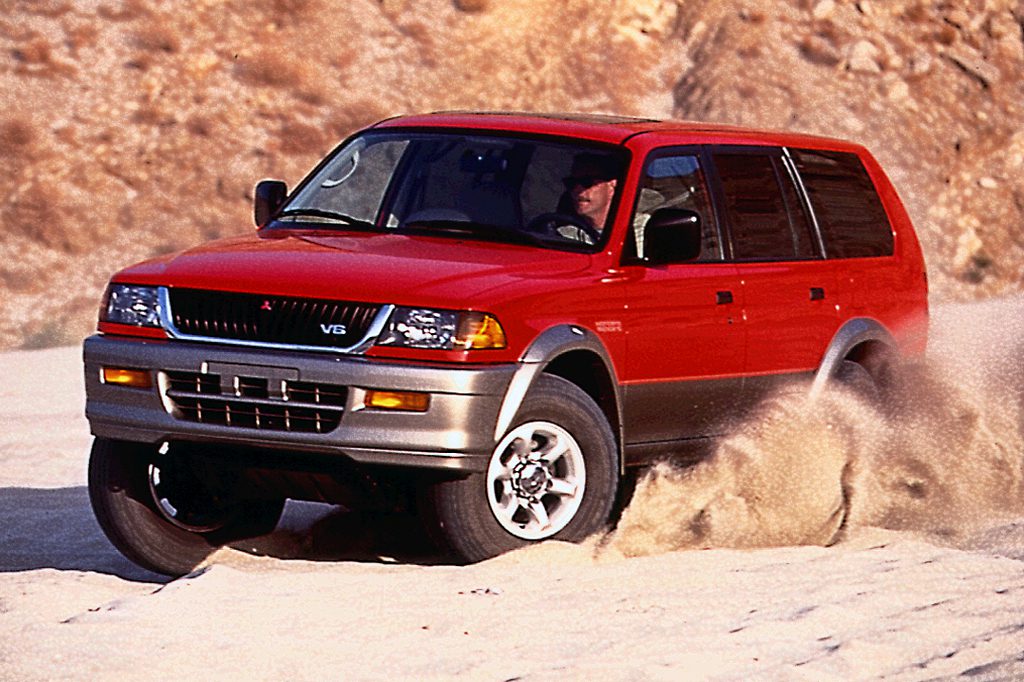| Midsize SUV; Built in Japan |
|
|
| Good condition price range: $1,400 – $6,000* |

1998 Mitsubishi Montero Sport LS

1998 Mitsubishi Montero Sport ES

1998 Mitsubishi Montero Sport LS

1997 Mitsubishi Montero Sport interior

1997 Mitsubishi Montero Sport LS
| Pros: |
|
| Cons: |
|
All told, the Montero Sport is too slow, noisy, and stiff-riding to truly satisfy the driver who spends more time on suburban roads than rural trails.
Overview
Mitsubishi entered the midsize sport-utility market during the 1997 model year, adding the new Montero Sport as a smaller-size companion to the long-lived regular Montero. Built on the same chassis as that regular Montero, the Sport had a shorter, lighter, and much lower body. Models included an entry-level ES with 2-wheel drive, an LS with either 2- or 4-wheel drive, and an XLS offered only with 4-wheel drive. All Sports carried Mitsubishi’s veteran 3.0-liter V6 engine, with the exception of the ES, which used a 2.4-liter 4-cylinder. The ES and 4WD LS had a standard 5-speed manual transmission, while other models got a 4-speed automatic.
Yearly Updates
| 1998 Montero Sport A 2-wheel-drive model joined for 1998, in top XLS trim. Formerly optional, antilock brakes became standard on the LS 4×4 as well as XLS models. The 4-wheel-drive XLS added heated seats and door mirrors, plus a locking rear differential that would be useful in tough off-road situations. |
| 1999 Montero Sport A new luxury Limited model joined the Montero Sport lineup, equipped with the bigger Montero’s 3.5-liter V6 engine. Available with either 2- or 4-wheel drive, the Limited model featured a unique chrome grille with fog lamps, leather seats, power moonroof, and other amenities. |
| 2000 Montero Sport A mild facelift included a fresh front-end look and black tailgate trim. The LImited got a new monochrome exterior. Interiors were revised with 2-tone color schemes and larger front cupholders in a revised console. Rear coil springs replaced leaf springs, and all but the price-leader ES got larger front brakes and 16-inch wheels. The ES dropped its 4-cylinder engine in favor of the 3.0-liter V6, and lost its manual transmission. The automatic gained electronic shift control that adapts to driving style. An antitheft engine immobilizer was integrated with the ignition key. A limited-slip differential was included on Limited and available for XLS, replacing the previous lock-rear-differential option. |
| 2001 Montero Sport A new 3.5XS sport-trimmed model joined the lineup in 2001. All models added rear child-seat anchors, driver’s-seatbelt pretensioner, front-seatbelt load-force limiters, and structural strengthening. All models also qualified as Low Emissions Vehicles in all 50 states this year. |
| 2002 Montero Sport A more-sophisticated 4WD system, called All4-wheel drive, replaced a 4WD system that had to be disengaged on dry pavement for 2002. Among other additions this year: a color-keyed grille for the Limited, tube-type side steps standard on LS and XLS and optional on ES, and platinum-finish gauges on all but the ES. |
| 2003 Montero Sport A .08-inch higher roof is the only significant change to the Montero Sport for ’03. |
| 2004 Montero Sport A 3.5-liter V6 is now standard on both the LS and XLS, instead of just the XLS, this year. |
